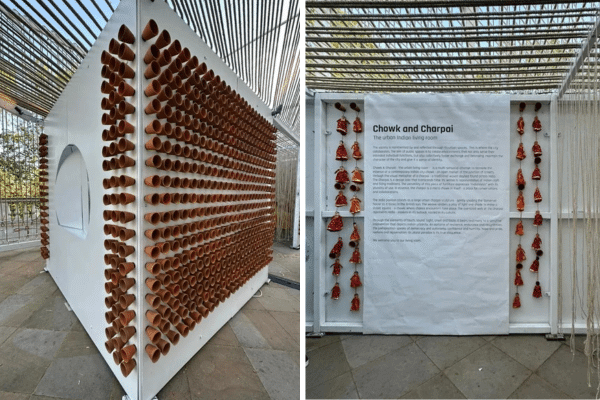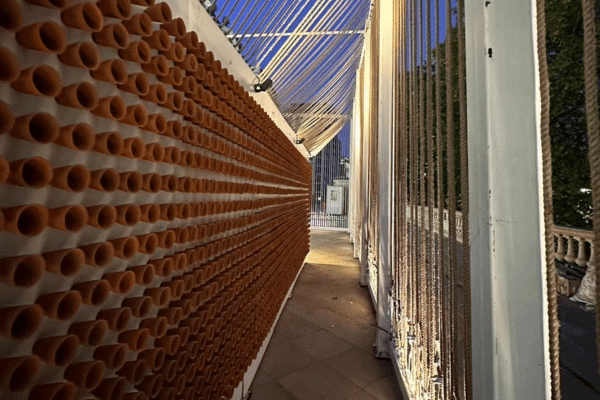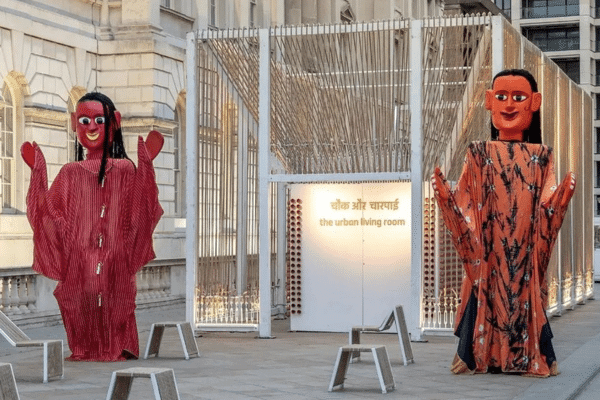At the fourth edition of the prestigious London Design Biennale LDB, India has met the challenge of the theme “The Global Game: Remapping Collaborations” with a look back at its traditions, and modernising them for a contemporary world.
The main aim of the LDB is to present new perspectives on the future of our built environment. Participants from across the globe were invited to imagine and enact new forms of international cooperation and participation – including with each other – through the medium of design.
Its pavilion is designed as a multi-sensory evocation of the essence of a contemporary Indian city. Or rather, a city chowk (crossing), where the community has traditionally gathered, not just for a spot of shopping, but also for that leisurely guftgu (exchange of views), or collective exchange.

The open market at the junction of streets is built entirely with – wait for it – the charpai.
The visual metaphor of the charpai – a traditional woven daybed found across India – seems apt for this unusual concept. As a sustainable, moldable and versatile product, the charpai is a design icon that transcends time, and its weave is representative of Indian craft.
The Indian pavilion is titled “Chowk & Charpai: An Urban Living Room”, and is curated and designed by Delhi-NCR based The Design Village (TDV) and Studio Archohm, also Delhi-based.
View this post on Instagram
35 students from TDV attended the LDB and showcased their practical design intellect and thinking.
The pavilion stand as a large urban charpai sculpture, gently shading the palatial venue Somerset House as it basks in the British sun. The weave of the charpai renders a play of light and shade to make a street square – a chowk, where chance encounters take place. The oversized web of the charpai represents India – modern in its outlook, rooted in its culture.

Through the elements of touch, sound, sight, smell, and taste, the chowk represents Indian urbanity which adjusts and adapts through dense landscapes. Terracotta cups dot the facade and promise a “kullad chai” tasting experience – a testimony to the comforting warmth of Indian hospitality and craft. Urban furniture inspired by the Pavilion punctuates the area – these act as physical ambassadors and find a place in other pavilions at the London Design Biennale Inside, one can hear the humdrum of Indian streets, under a maze of exaggerated Charpoi weaves. Notes of “Petrichor” – the quintessential Indian smell of the first monsoon rain on mud developed by Boond from Kannauj, complements the experience. Matching the scale of the Pavilion, Puppeteers from Kayakalp Trust perform a story of the Mango fruit, posing questions on Climate Change.
Mridu Sahai, Co-Founder of The Design Village, said, “It was important for us to show various layers and complexities of narratives. Our country is multidimensional and therefore its true representation is hard to recreate in a singular inanimate manner. Our students have had the chance to work closely with artisans and professionals through this journey of putting together the India Pavilion, which makes it very special.”
Bring back the charpai, we say!




